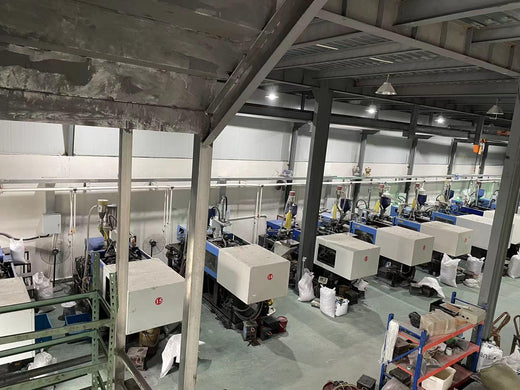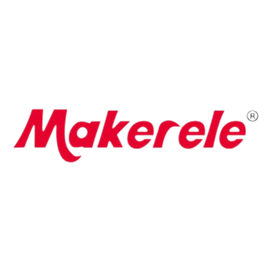MAKERELE's Technological Edge: Materials, Processes, and Standards (3)

In the competitive landscape of the electrical industry, MAKERELE has carved out a niche for itself by leveraging a technological edge that sets it apart. This edge is manifested in the meticulous choice of materials, the precision of manufacturing processes, and the unwavering commitment to adhering to international standards. This article delves into the heart of MAKERELE's technological prowess, exploring how these elements coalesce to ensure product quality and compliance.
Materials: The Foundation of Quality
Shell Materials for American Standard Junction Boxes
The selection of shell materials for our American standard junction boxes is a critical aspect of our product design. We utilize a range of high-quality plastics, each chosen for its unique properties that align with specific application requirements.
Polycarbonate (PC): Renowned for its high strength and transparency, PC offers superior mechanical properties and heat resistance. This makes it ideal for applications where the junction box is exposed to high temperatures or requires a certain level of visibility for internal components. Its robustness ensures that the box can withstand physical impacts, safeguarding the electrical connections within.
Polypropylene (PP): PP is a lightweight yet durable material, offering good resistance to corrosion and electrical insulation. Its moderate hardness provides a balance between flexibility and rigidity, making it suitable for general use in a variety of environments. PP is particularly advantageous in terms of cost-effectiveness, allowing us to offer high-quality products at competitive prices.
Polystyrene (PS): Known for its ease of processing and affordability, PS is used in applications where the demands on the material are less stringent. Despite its lower hardness compared to PC and PP, PS still delivers reliable performance in terms of protecting the internal components from environmental factors.
Internal Conductive Materials
The internal conductive materials are the lifeblood of our junction boxes, ensuring efficient and safe electrical flow.
Copper: As an exceptional conductor of electricity, copper is used in high-demand applications where minimal resistance and maximum conductivity are crucial. Its low resistivity ensures that electrical currents pass through with minimal energy loss, which is essential for maintaining the efficiency of electrical systems. Copper's durability and resistance to corrosion further enhance the longevity of our products.
Aluminum: Aluminum offers a cost-effective alternative to copper while still providing good conductivity. Its lower density makes it a lightweight option, which is beneficial for applications where weight is a consideration. Although not as conductive as copper, aluminum's corrosion resistance and lower cost make it a viable choice for many standard applications.
Manufacturing Processes: Precision and Reliability
Cable gland: A Symphony of Processes
The manufacturing of cable gland at MAKERELE is a testament to our commitment to precision and reliability. Each terminal undergoes a series of carefully controlled processes to ensure its performance and safety.

Cold Shrink Process: This process involves the use of elastic materials that are compressed around the cable during installation. The material's inherent elasticity allows it to conform tightly to the cable's shape, creating a secure and watertight seal. This process is particularly effective in environments where the cable is exposed to varying temperatures and humidity levels, as the material can expand and contract without losing its grip.
Heat Shrink Process: By applying heat to a specially designed sleeve, we can cause it to shrink and tightly encapsulate the cable. This process is not only simple and quick but also provides a high level of protection against environmental factors. The heat shrink material forms a snug fit around the cable, preventing moisture and contaminants from reaching the electrical connections.
Crimping Process: For a mechanical connection that is both strong and reliable, our crimping process is employed. This involves the use of a crimping tool to compress a metal sleeve around the cable's conductor, creating a solid and enduring bond. The crimping process ensures a low-resistance connection, which is essential for maintaining the integrity of the electrical circuit.
Compliance with International Standards: A Mark of Trust
Conclusion: A Commitment to Excellence
MAKERELE's technological edge is the result of a deep understanding of materials, a mastery of manufacturing processes, and a steadfast commitment to compliance with international standards. Our choice of high-quality materials, coupled with precision manufacturing techniques, ensures that our products are not only durable and reliable but also safe to use. By adhering to stringent standards such as UL943, UL498, UL20, and UL514C, we have earned the trust of our customers and established ourselves as a leader in the electrical industry.
As we continue to innovate and expand our product range, our commitment to quality and safety remains unwavering. We invite you to experience the difference that MAKERELE's technological edge can make in your electrical projects. Join us in our quest for excellence, and together, we can build a safer and more efficient electrical future.
- MAKERELE's: Embarking on a Legendary Journey in the Electrical Field (1)
- MAKERELE's: Product Matrix: Building an All-Round Electrical Accessories Arsenal (2)
- MAKERELE's: Technological Edge: Materials, Processes, and Standards (3)
- MAKERELE's: Global Reach: Markets, Partners, and Customer Success Stories (4)





